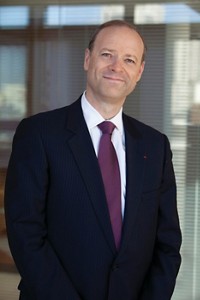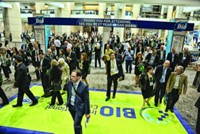Advertisement
Grab your lab coat. Let's get started
Welcome!
Welcome!
Create an account below to get 6 C&EN articles per month, receive newsletters and more - all free.
It seems this is your first time logging in online. Please enter the following information to continue.
As an ACS member you automatically get access to this site. All we need is few more details to create your reading experience.
Not you? Sign in with a different account.
Not you? Sign in with a different account.
ERROR 1
ERROR 1
ERROR 2
ERROR 2
ERROR 2
ERROR 2
ERROR 2
Password and Confirm password must match.
If you have an ACS member number, please enter it here so we can link this account to your membership. (optional)
ERROR 2
ACS values your privacy. By submitting your information, you are gaining access to C&EN and subscribing to our weekly newsletter. We use the information you provide to make your reading experience better, and we will never sell your data to third party members.
People
How MSF Advanced From The Field To The Research Lab
by Rick Mullin
April 20, 2009
| A version of this story appeared in
Volume 87, Issue 16
MÉDECINS SANS FRONTIÈRES' (Doctors Without Borders) dissatisfaction with the status quo on health care in poor countries fueled the humanitarian work that landed it the Nobel Peace Prize in 1999. That same distress propelled the launch, shortly thereafter, of the Drugs for Neglected Diseases Initiative (DNDi).
The organization was anxious to address what it saw as "market and public policy failure" in deploying resources against neglected diseases, says James Orbinski, associate professor of medicine at the University of Toronto and the former MSF president who accepted the prize.
"It was clear from our projects around the world that patients were dying of disease for which existing treatments were less and less effective. Existing treatments were imperfect at best and were not designed to meet the delivery needs of people in the developing world," Orbinski tells C&EN. "We felt that wasn't good enough."
MSF found, however, that the private and public health care communities generally accepted the situation. "The sense was that the market would do what was necessary," he recalls of the prevailing attitude. "But it was clear to us that an untapped and unmarshaled potential existed."
What was needed, Orbinski says, was a not-for-profit center outside MSF to coordinate public and private efforts. "We needed money and intellectual resources," he says. "We needed the right people at the table in the right room." With the boost from Stockholm, MSF established a working group that would lead to DNDi's launch in 2003.
One of the people around the table was Thomas Saugnac, a consultant from Ernst & Young's Paris office who was brought in to help work out the business angle for an organization that would specialize in managing drug research projects.
"As a businessperson, I was a bit amazed at this group of gentlemen and ladies with their heart in their hands and not much business focus," Saugnac recalls. "But our feasibility study indicated that a pure business orientation would fail if it didn't recognize the power of the group's energy and ability to make things happen." Ernst & Young also recognized the power of the MSF "brand" as a major asset.
Saugnac credits the working group's director, Yves Champey, the former head of commercial development at Rhône-Poulenc, with instilling the venture with a business rationale and discipline. Champey's business sensibility balanced the humanitarian background of DNDi's executive director, Bernard Pécoul, the former head of MSF in France.
DNDi has shown pharmaceutical firms that developing drugs for neglected diseases does not have to take as long as it does to develop a blockbuster statin drug, Saugnac points out. This is especially the case when DNDi makes sure the research gets full attention. "They have put pressure on pharma companies and their partners to move on neglected diseases at the speed comparable to that of a blockbuster A-Team," he says.








Join the conversation
Contact the reporter
Submit a Letter to the Editor for publication
Engage with us on Twitter